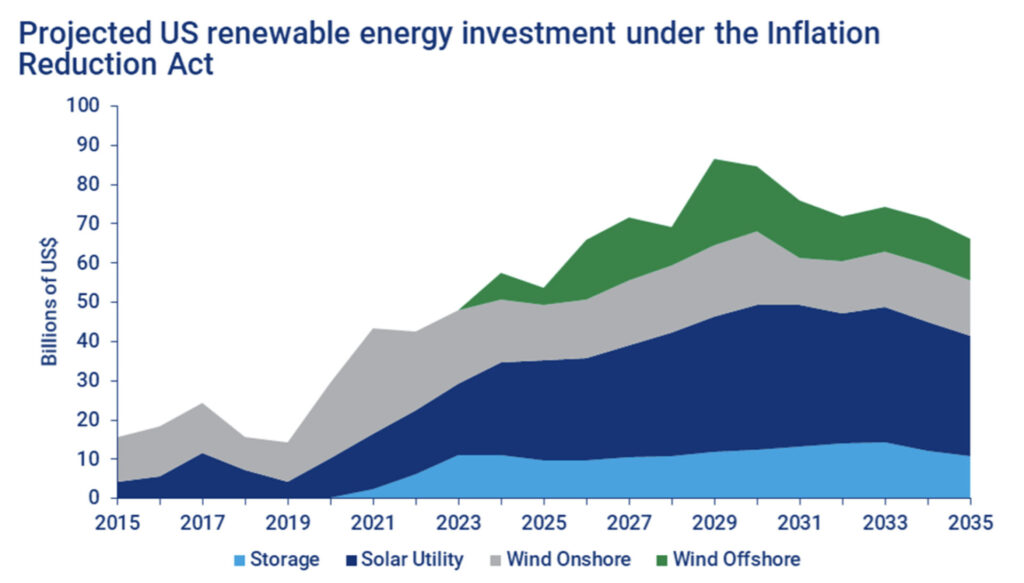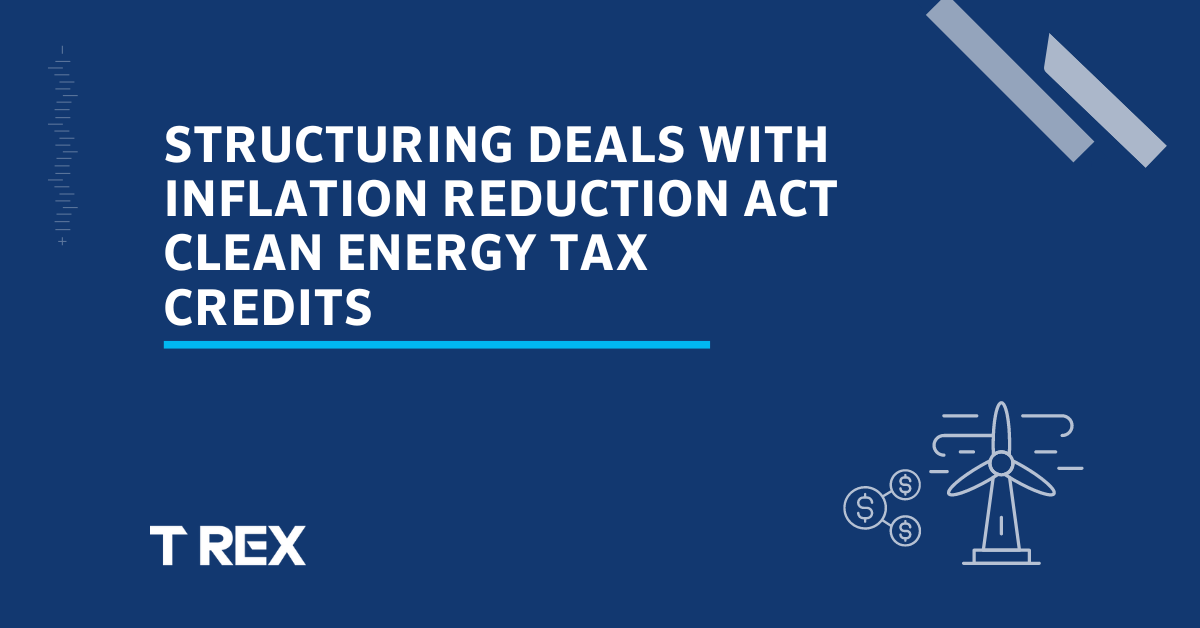As the effects of climate change become more apparent, incentivizing investment in renewable energy has become ever more critical. However, match this need against the rapid inflation the world has seen this year and the complexities of financing utility-scale projects, and it’s easy to understand the challenges of clean energy investments.
U.S. lawmakers recognized the difficulty of this balancing act for clean energy and in August 2022, the Inflation Reduction Act (IRA) was signed into law. While this bill affects a wide array of industries, it will have especially large implications for renewable energy. Some notable highlights affecting clean energy investments include:
- Extensions of the Investment Tax Credit (ITC) and Production Tax Credit (PTC)
- Ability for tax credits to be transferred
- Eligibility of new technologies for tax credits
- Growth and increased value of tax credits for carbon capture
Implications of the IRA on the Renewable Energy Industry
While the IRA will encourage sustainable investing in energy transition broadly, the renewable energy industry stands to gain significant investment thanks to a number of provisions, most notably the extended ITC and PTC and the addition of bonus tax credits.
Understanding the Clean Energy Tax Credits
The PTC provides $26 per megawatt-hour (adjusted annually for inflation) while the ITC provides for 30% of eligible costs. This bill will extend those clean energy tax credits to projects that begin construction between January 1, 2022, and January 1, 2025.
While this only accounts for a three-year extension for PTCs and a one-year extension for ITCs, there is also an added bonus that solar projects may now qualify for PTCs over ITCs allowing for larger tax credits on those projects. Furthermore, projects that don’t begin in this window may still be eligible for the technology-neutral production and investment tax credits until 2032. Technology-neutral tax credits can be applied to any facility producing energy as long as its greenhouse gas emissions are net zero.
Renewable Energy Projects and Their Eligibility for “Bonus” Tax Credits
On top of the ITC and PTC, the IRA also created additional “bonus” tax credits that certain projects may be eligible for. Generally, these credits will be an additional 10% of the original tax credit amount but could be as high as 20%.
The benefits provided by the IRA will incentivize new players hoping to take advantage of tax credits to allocate capital to renewable projects, bolstering a commitment to sustainable finance. In addition, it will help ensure continued commitment from investors already familiar with funding clean energy, as the legislation will drive industry growth and create confidence in the profitability of the energy transition.

Managing Renewables Tax Credits in New Deals
However attractive these credits seem, computing and strategizing how each of these features will factor into a deal can be difficult. Each of these new benefits could have large implications on the overall cost of capital which is a key value when calculating the profitability of a project.
How T-REX Can Help Support Renewable Energy Project Finance Deals and Unlock Value Under the IRA
You can model a project finance deal on T-REX with partnership flips, tax equity, and conditions stemming from the IRA by leveraging three major platform features:
- Ability to factor in ITC and PTC terms
- Capacity to structure the seniority among deal participants, like cash equity vs. tax equity, via T-REX’s digital waterfall feature
- Capability to calculate the IRR, flip date, and PAYGO as the main tax equity functions
In addition, on T-REX, you can model specific lease schemes including a sale-leaseback or inverted lease.

Further, you have the ability to model various production scenarios and other sensitivity analyses at the project level. This gives clients the ability to stress test revenue, CapEx, OpEx, and loan terms, and assess overall impact on the IRR. As your project meets more of the eligibility criteria in the IRA, you’ll be able to account for those exact changes in revenue and see the effect on the overall deal.
Best of all, the T-REX platform offers advanced reporting capabilities, including cashflows and price yield tables at the tax equity transaction and portfolio level, giving you greater visibility into how each credit will affect your deal and portfolio as a whole. Once a project is active, you’ll also be able to compare actual vs. projected cashflows and better understand how a project is performing.
Interested in learning more about how T-REX supports the IRA provisions and clean energy tax credits? Check out our solution for project finance and get in touch.
